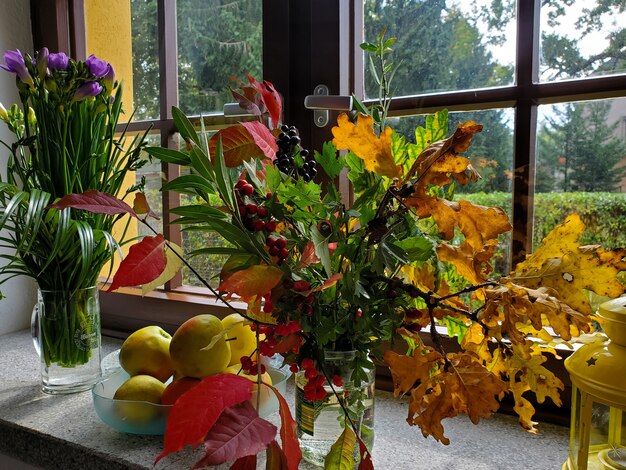The Best Indoor Plants to Transition Into Autumn
Autumn is knocking on our doors, and what better way to welcome it than by refreshing your indoor space with some of the best indoor plants for the season? As the leaves change color outside, bringing a touch of nature indoors can create a cozy and warm atmosphere. Whether you’re a seasoned plant enthusiast or just starting out, this guide is packed with indoor gardening tips to help you select the perfect houseplants for fall. From vibrant foliage to easy-care options, these autumn indoor plants will make your home feel like a snug retreat. Get ready to transform your space into a green haven that thrives even as the temperatures drop! For more inspiration, check out these fall-friendly houseplants.## Top Picks for Autumn Indoor Plants
As the seasons change, so can your indoor garden. Let’s explore some of the best indoor plants that thrive during autumn, adding warmth and life to your home as the days grow shorter.
Cozy Up with Snake Plants
Snake plants are perfect for creating a cozy autumn atmosphere in your home. These hardy plants are known for their tall, striking leaves and low-maintenance care requirements.
Snake plants come in various sizes and patterns, making them versatile for any room. They’re great at purifying air and can tolerate low light conditions, perfect for those darker autumn days.
One of the best things about snake plants is their ability to withstand neglect. They don’t need frequent watering, making them ideal for busy households or forgetful plant parents.
For a unique autumn look, consider varieties like the ‘Moonshine’ snake plant with its silvery-green leaves or the ‘Cylindrica’ with its round, spear-like foliage. These can add interesting textures to your indoor garden.
Embrace the Warmth of Pothos
Pothos plants are a fantastic choice for bringing warmth to your home during the fall season. Their lush, heart-shaped leaves can trail beautifully from hanging baskets or climb up trellises, adding a touch of green to any corner.
These versatile plants come in various shades, from deep green to variegated patterns. The golden pothos, with its yellow and green leaves, can mimic the warm hues of autumn foliage indoors.
Pothos are known for their air-purifying qualities and their ability to thrive in a range of light conditions. They’re perfect for brightening up darker corners as the days get shorter.
Care for pothos is straightforward, making them great for beginners. They prefer to dry out between waterings, which aligns well with the lower humidity of autumn months.
Learn more about caring for pothos and other fall-friendly plants here.
Easy-Care Peace Lilies
Peace lilies are elegant plants that can add a touch of sophistication to your autumn decor. Their dark green leaves and occasional white blooms create a striking contrast perfect for the season.
These plants are known for their air-purifying abilities, helping to keep your indoor air clean as you spend more time inside during cooler months. They’re also relatively low-maintenance, making them great for busy households.
Peace lilies prefer indirect light and consistently moist soil, but they’re forgiving if you forget to water occasionally. They’ll dramatically droop when thirsty, but quickly perk up after a good drink.
As temperatures cool, peace lilies can adapt well to indoor conditions. They don’t need as much water in autumn and winter, making them an ideal transition plant for the season.
For variety, look for different peace lily cultivars. Some have broader leaves, while others are more compact, allowing you to find the perfect fit for your space.
Indoor Gardening Tips for Fall
As we move into autumn, it’s important to adjust our plant care routines. Here are some essential tips to keep your indoor garden thriving during the cooler months.
Light and Water Adjustments
As days grow shorter in autumn, it’s crucial to adjust the light and water for your indoor plants. Many plants enter a period of dormancy, requiring changes in care.
First, consider relocating your plants. Move them closer to windows to maximize the available natural light. South-facing windows are ideal for most plants during this season.
Watering needs typically decrease in autumn. Most plants prefer to dry out slightly between waterings. Use your finger to check soil moisture before watering, and adjust your routine accordingly.
Be mindful of heating systems, which can dry out plants faster. Consider using a humidifier or pebble trays to maintain adequate moisture levels around your plants.
For more detailed advice on seasonal plant care, check out this guide.
Choosing the Right Potting Mix
Selecting the appropriate potting mix is crucial for the health of your autumn indoor plants. The right soil can help regulate moisture and provide essential nutrients.
Look for well-draining potting mixes that contain perlite or vermiculite. These components help prevent waterlogging, which is especially important as plants’ water needs decrease in cooler months.
Consider adding organic matter like compost to your potting mix. This can provide slow-release nutrients to support your plants through their dormant period.
For succulents and cacti, use a specially formulated mix that drains quickly. These plants are particularly susceptible to root rot in cooler, damper conditions.
Remember to refresh your potting mix annually. Over time, soil can become compacted and lose its nutrient content, affecting plant health.
Keeping Pests at Bay
Autumn can bring new pest challenges for indoor plants. As outdoor insects seek warmth, they may find their way to your houseplants.
Regularly inspect your plants for signs of pests. Look under leaves and along stems for small insects, webs, or unusual spots. Early detection is key to preventing infestations.
If you spot pests, isolate the affected plant immediately. Treat with neem oil or insecticidal soap, following the product instructions carefully.
Maintain good air circulation around your plants to discourage pest populations. Prune dense growth and space plants appropriately.
Consider introducing beneficial insects like ladybugs to your indoor garden. They can help control common pests naturally.
Houseplants That Love Cooler Temps
Some plants

actually thrive in the cooler temperatures of autumn. Let’s explore a couple of hardy options that can add life to your home as the mercury drops.
Hardy ZZ Plants
ZZ plants, or Zamioculcas zamiifolia, are excellent choices for autumn indoor gardening. These plants are known for their tolerance to a wide range of conditions, including cooler temperatures.
ZZ plants have glossy, dark green leaves that can add a touch of elegance to any room. They’re slow-growing, making them perfect for spaces where you don’t want a plant to outgrow its spot quickly.
One of the best features of ZZ plants is their ability to thrive in low light conditions. As autumn days grow shorter, these plants will continue to look lush and healthy even in dimmer corners of your home.
ZZ plants are incredibly drought-tolerant, making them ideal for those who might forget to water regularly. In fact, they prefer to dry out completely between waterings, especially in cooler months.
Discover more about ZZ plants and other cool-weather favorites here.
Resilient Spider Plants
Spider plants, or Chlorophytum comosum, are fantastic choices for autumn indoor gardening. These hardy plants can tolerate cooler temperatures and lower light conditions, making them perfect for the changing season.
Known for their arching leaves and small plantlets (or “spiderettes”), spider plants add visual interest to any space. They look great in hanging baskets or on shelves where their foliage can cascade down.
Spider plants are excellent air purifiers, helping to keep your indoor air clean as you spend more time inside during cooler months. They’re particularly good at removing formaldehyde from the air.
Care for spider plants is straightforward, even for beginners. They prefer bright, indirect light but can tolerate lower light conditions. Water when the top inch of soil feels dry, reducing frequency as temperatures cool.


